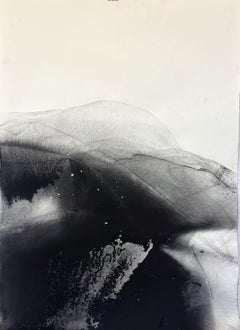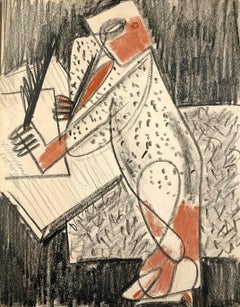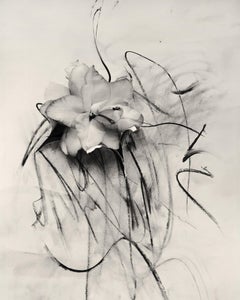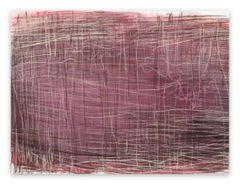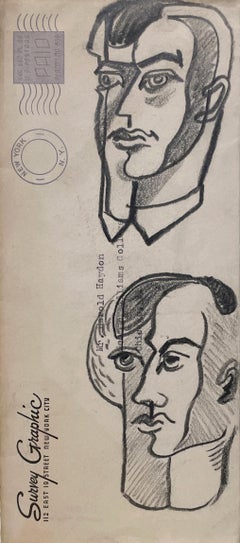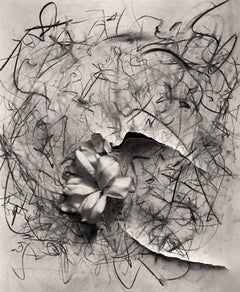Charcoal Abstract Drawings and Watercolors
2010s Contemporary Charcoal Abstract Drawings and Watercolors
Charcoal, Paper
Mid-20th Century Cubist Charcoal Abstract Drawings and Watercolors
Paper, Charcoal, Pastel
21st Century and Contemporary Abstract Expressionist Charcoal Abstract Drawings and Watercolors
Paper, Photographic Film, Charcoal, Archival Ink, Archival Paper
2010s Abstract Charcoal Abstract Drawings and Watercolors
Paper, Charcoal, Pastel
Mid-20th Century American Modern Charcoal Abstract Drawings and Watercolors
Paper, Charcoal
21st Century and Contemporary Abstract Expressionist Charcoal Abstract Drawings and Watercolors
Paper, Photographic Film, Charcoal, Archival Ink, Archival Paper
Early 2000s Abstract Charcoal Abstract Drawings and Watercolors
Archival Paper, Charcoal
2010s Neo-Expressionist Charcoal Abstract Drawings and Watercolors
Charcoal, Acrylic, Archival Paper
Mid-20th Century Surrealist Charcoal Abstract Drawings and Watercolors
Paper, Charcoal
2010s Abstract Expressionist Charcoal Abstract Drawings and Watercolors
Gold
2010s Contemporary Charcoal Abstract Drawings and Watercolors
Paper, Charcoal, Ink, Acrylic
21st Century and Contemporary Contemporary Charcoal Abstract Drawings and Watercolors
Paper, Charcoal, Pastel, Acrylic, Wood Panel, Graphite
21st Century and Contemporary Abstract Expressionist Charcoal Abstract Drawings and Watercolors
Paper, Photographic Film, Charcoal, Archival Ink, Archival Paper
2010s Contemporary Charcoal Abstract Drawings and Watercolors
Paper, Charcoal
21st Century and Contemporary Abstract Expressionist Charcoal Abstract Drawings and Watercolors
Paper, Photographic Film, Charcoal, Archival Ink, Archival Paper
1950s Modern Charcoal Abstract Drawings and Watercolors
Paper, Charcoal
Early 2000s Abstract Charcoal Abstract Drawings and Watercolors
Paper, Charcoal
2010s Abstract Charcoal Abstract Drawings and Watercolors
Paint, Paper, Conté, Charcoal, India Ink, Acrylic, Tempera, Watercolor, ...
20th Century Abstract Charcoal Abstract Drawings and Watercolors
Paper, Charcoal, Crayon, Watercolor, Pencil
2010s Contemporary Charcoal Abstract Drawings and Watercolors
Paper, Charcoal
2010s Contemporary Charcoal Abstract Drawings and Watercolors
Paper, Mixed Media, Charcoal, Oil Pastel, Pastel
Mid-20th Century Modern Charcoal Abstract Drawings and Watercolors
Charcoal
2010s Abstract Expressionist Charcoal Abstract Drawings and Watercolors
Paper, Charcoal
Mid-20th Century Abstract Charcoal Abstract Drawings and Watercolors
Charcoal
2010s Abstract Charcoal Abstract Drawings and Watercolors
Charcoal, Pastel
1960s Abstract Expressionist Charcoal Abstract Drawings and Watercolors
Paper, Charcoal
1980s Contemporary Charcoal Abstract Drawings and Watercolors
Wood, Charcoal, Pencil
2010s Abstract Charcoal Abstract Drawings and Watercolors
Charcoal
21st Century and Contemporary Contemporary Charcoal Abstract Drawings and Watercolors
Charcoal, Archival Paper, Oil, Wood Panel
2010s Abstract Charcoal Abstract Drawings and Watercolors
Charcoal, Oil Pastel, Pastel, Pencil
21st Century and Contemporary Abstract Expressionist Charcoal Abstract Drawings and Watercolors
Charcoal, Graphite, India Ink, Pastel
21st Century and Contemporary Contemporary Charcoal Abstract Drawings and Watercolors
Paper, Charcoal
21st Century and Contemporary Contemporary Charcoal Abstract Drawings and Watercolors
Charcoal, Pastel, Archival Paper
Mid-20th Century Modern Charcoal Abstract Drawings and Watercolors
Charcoal
21st Century and Contemporary Contemporary Charcoal Abstract Drawings and Watercolors
Charcoal, Wood Panel, Archival Paper, Acrylic
21st Century and Contemporary Abstract Expressionist Charcoal Abstract Drawings and Watercolors
Charcoal, Pastel, India Ink, Graphite
20th Century Expressionist Charcoal Abstract Drawings and Watercolors
Paper, Charcoal
2010s Contemporary Charcoal Abstract Drawings and Watercolors
Paper, Ink, Acrylic, Charcoal
2010s Abstract Expressionist Charcoal Abstract Drawings and Watercolors
Charcoal, Mixed Media, Watercolor, Archival Paper
2010s Abstract Charcoal Abstract Drawings and Watercolors
Charcoal, Oil Pastel, Paper, Pastel
21st Century and Contemporary Contemporary Charcoal Abstract Drawings and Watercolors
Charcoal, Oil, Wood Panel, Archival Paper
21st Century and Contemporary Abstract Charcoal Abstract Drawings and Watercolors
Fabric, Wood, Paint, Charcoal, Pigment
1990s Abstract Charcoal Abstract Drawings and Watercolors
Paper, Charcoal, Pencil
1970s Contemporary Charcoal Abstract Drawings and Watercolors
Watercolor, Charcoal
2010s Abstract Expressionist Charcoal Abstract Drawings and Watercolors
Paper, Charcoal
Mid-20th Century Modern Charcoal Abstract Drawings and Watercolors
Paper, Charcoal
20th Century Abstract Charcoal Abstract Drawings and Watercolors
Charcoal
2010s Abstract Charcoal Abstract Drawings and Watercolors
Paper, Charcoal
1950s Abstract Charcoal Abstract Drawings and Watercolors
Paper, Charcoal, Pastel
Mid-20th Century Modern Charcoal Abstract Drawings and Watercolors
Paper, Charcoal
21st Century and Contemporary Contemporary Charcoal Abstract Drawings and Watercolors
Charcoal, Archival Paper
2010s Abstract Charcoal Abstract Drawings and Watercolors
Paper, Charcoal
21st Century and Contemporary Contemporary Charcoal Abstract Drawings and Watercolors
Paper, Charcoal
2010s Abstract Charcoal Abstract Drawings and Watercolors
Charcoal, Pastel, Acrylic, House Paint
2010s Abstract Expressionist Charcoal Abstract Drawings and Watercolors
Paper, Charcoal
21st Century and Contemporary Contemporary Charcoal Abstract Drawings and Watercolors
Charcoal, Pastel, Archival Paper
2010s Abstract Charcoal Abstract Drawings and Watercolors
Paper, Charcoal
21st Century and Contemporary Contemporary Charcoal Abstract Drawings and Watercolors
Charcoal, Pastel, Archival Paper
2010s Contemporary Charcoal Abstract Drawings and Watercolors
Paper, Charcoal
Mid-20th Century Modern Charcoal Abstract Drawings and Watercolors
Charcoal
